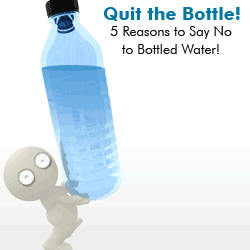Chlorine has been the de facto means of sanitizing and keeping swimming pools clean in the United States for decades despite healthier and better alternatives.
There is no denying that chlorine is a poison, and its ability to kill bacteria is the reason it is so widely used. The trouble with chlorine is that, when it is put into the pool water, it becomes all too easily ingested by those using the pool. Swallowing pool water is the most obvious, but the swimming and splashing of people in the pool also releases chlorine gases into the air where they are breathed in. Chlorine is also absorbed through the skin.
According to WebMD.com, swimmers have experienced breathing problems similar to asthma after swimming in public pools even though they showed no sign of any respiratory problems previously. Even trained swimmers were three times more likely to develop exercise induced asthma in pools with higher chlorine levels.
Bromine has been touted as a chemical alternative to chlorine, but it, too, according to no less than the CDC, has similar side effects, such as respiratory problems, skin irritations, nausea and other gastro distress from swallowing.

So, there is strong evidence that chemicals can be harmful to swimmers. So, what alternatives are there? Well, since the 1950s, ozone sanitation systems have been used in Europe. These have the advantages of killing bacteria and viruses without all of the exposure to chlorine getting breathed in or pulled in through the skin. And, the water quality realized with ozone systems is drinking quality; many municipal water systems are treated with ozone.
Now, ozone itself would be bad if it were in the actual pool water, so the water is only ozonated when its filtered and run through the pump system. This requires a complex system of tanks and other filtration's to keep the ozone from actually reaching the pool, and this makes them very expensive. So, while there is a heavier outlay of money at first, it will eventually pay for itself. Chlorine contributes to the rusting out of pipes, eats up pool liners, and leads to other such damage to pool structures.
Now, most ozone pool systems sold in the US, in order to prevent ozone from ending up in the pool and to cut down on the costs for having the extra tanks and such, use very low concentrations of ozone. These are almost useless as the ozone levels are so low that it will take several passes and perhaps days for the water to become fully sanitized. Be prepared to spend some money on a ozone system, and pick up one that works like the European models for best results.
Ultra violet light (UV) is also a viable alternative to a straight chemical approach as it can clean the water effectively while reducing the need for chlorine use. These systems also offer an advantage over ozone systems in that a UV light can be retrofitted over the existing pumping system to bombard the water with the light after going through the filter whereas an ozone system requires a complete installation.
UV has been shown to be highly effective in killing bacteria, viruses and other pathogens, and it is used by many smaller scale water purification systems. The drawback to the UV system is that some chlorine is still needed to combat pathogen growth once the water goes back into the pool, but much less is needed. Around 60% less chlorine for a comparable sized pool is required. Such a low concentration will have no smell and any irritation or side effects will be minimal if even existent.
There are several drawbacks and health risks with chlorine. Using one of these chlorine alternatives will make your pool much more enjoyable and healthier for it's swimmers. Another plus is that these systems require less less time and effort on your part to keep your pool clean. This will give you more time to relax and enjoy your pool.
Read Next: Proper Chlorine Levels for A Healthy Pool



